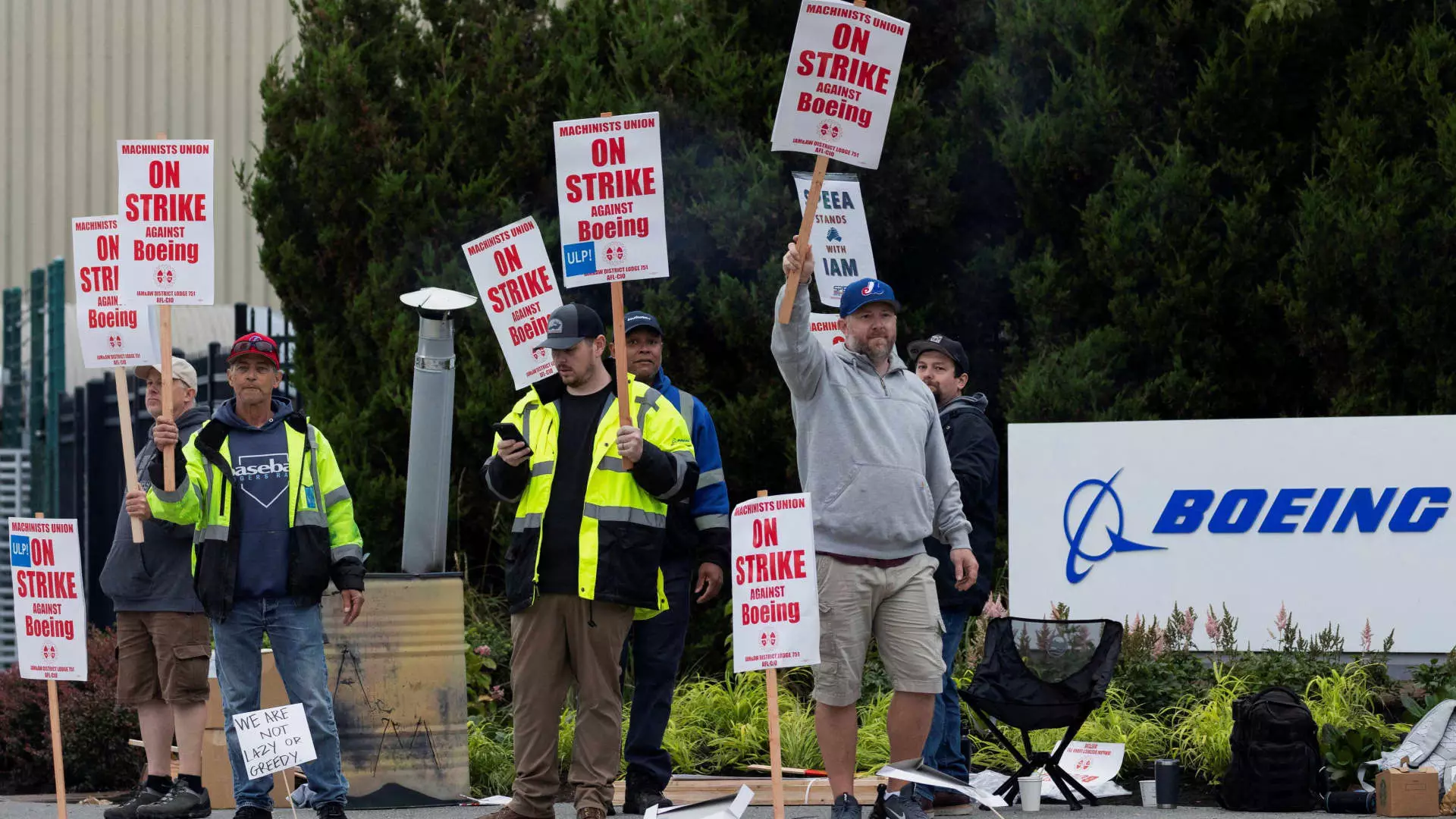In a scene reminiscent of labor movements throughout history, Boeing’s machinists have embarked on a significant strike that has drawn attention not only to their plight but also to the company’s precarious financial situation. The strike, initiated at midnight on September 13, follows a nearly unanimous vote rejecting a tentative agreement from the aerospace giant. About 30,000 machinists walked off the job, expressing their frustration over wage stagnation and the rising cost of living in the Seattle area. The stakes are high, with Boeing facing an estimated daily financial burden of around $50 million as production halts and supplier networks crumble.
Boeing, which has struggled to maintain profitability since 2018, currently boasts a staggering debt of around $60 billion and has recently experienced crises that have further hampered its operations. The effects of a recent door plug blowout on a 737 Max jet have compounded the airline’s financial woes, leading to significant operational disruptions in its manufacturing capabilities. With the company’s new CEO, Kelly Ortberg, at the helm, there is a clear urgency to restore confidence and efficiency within the organization.
The picket lines outside Boeing’s factories tell a poignant story of resilience. Workers, adamant about securing better wages, have undertaken unusual side jobs—from landscaping to furniture moving—to supplement their incomes during the strike. This determination showcases their unwillingness to back down and their commitment to seeking fair compensation in an increasingly challenging economic environment. As the union prepares for a potentially protracted labor dispute, solidarity among the workers appears unyielding. They have organized logistics for food and restroom breaks, reinforcing their unity and support for one another.
The crux of the workers’ struggle lies in a mounting cost of living in the region. Reports indicate that home prices in Washington state have surged dramatically, leaving many workers grappling with the financial reality of owning a home or even making ends meet. As workers openly discuss their sacrifices—foregoing dining out and deferring major expenses—it’s clear that their demands for higher wages are grounded in reality, rather than mere aspirations for wealth.
Amidst ongoing negotiations, Boeing’s latest offer proposed a 25% salary increase over a four-year period, which, while significant, falls short of the 40% raise the union initially demanded. The current lack of progress in negotiations highlights the stark divide between the aspirations of the workers and the company’s financial storyline. The International Association of Machinists and Aerospace Workers, which represents the machinists, has echoed concerns about the company’s unwillingness to acknowledge the workers’ priorities, signaling potential strife ahead.
Negotiations have not only reflected the tension between workers and management but have also caught the attention of external parties, including the Biden administration. Transportation Secretary Pete Buttigieg has expressed hope for a balanced resolution that would satisfy the employees while allowing Boeing to navigate its recovery. This involvement underscores the significance of labor movements in the broader economic landscape, emphasizing the relationship between fair labor practices and corporate sustainability.
This strike is but one chapter in a series of labor conflicts that have erupted across various industries, notably in aerospace, automotive, and entertainment. The current labor landscape, marked by a tight labor market, means that skilled workers are hard to find and harder to retain. Unlike previous years, such as the 2008 strike, when Boeing was in a more robust financial position, the current environment is rife with competition for skilled labor, making job security and fair compensation more critical than ever.
Additionally, the repercussions of this strike extend beyond the immediate workforce and the company itself. Boeing’s reliance on skilled labor makes it imperative that the union’s sentiments are heard and addressed. If management opts for layoffs or furloughs as a means to cut costs, this could potentially lead to longer-term implications for labor relations within the company, including difficulties in recruitment and retention of qualified personnel.
As the Boeing machinists stand firm in the face of financial uncertainty, their strike serves as a potent reminder of the ongoing struggle for fair labor practices. While Boeing seeks to stabilize its financial footing and restore its reputation, the workers are adamant in their pursuit of better wages and conditions. The resolution of this impasse could define the future of labor relations in the aerospace industry and set a precedent for how companies handle labor negotiations amid financial strain. As both sides navigate these turbulent waters, it will be vital for them to engage constructively, not just for their stability but for the health of the industry as a whole.

